
Antonio Allegri da Correggio, usually known as just Correggio was an Italian Renaissance painter who was the foremost painter of the Parma school of the High Italian Renaissance, who was responsible for some of the most vigorous and sensuous works of the sixteenth century. In his use of dynamic composition, illusionistic perspective and dramatic foreshortening, Correggio prefigured the Baroque art of the seventeenth century and the Rococo art of the eighteenth century. He is considered a master of chiaroscuro.

Filippino Lippi was an Italian painter working in Florence, Italy during the later years of the Early Renaissance and first few years of the High Renaissance.

Domenico Veneziano was an Italian painter of the early Renaissance, active mostly in Perugia and Tuscany.
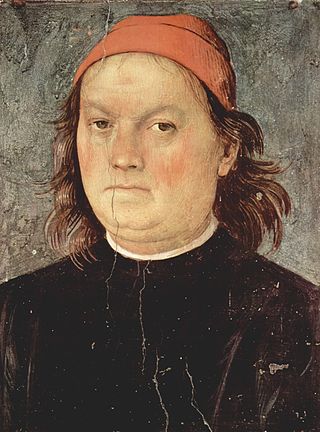
Pietro Perugino, an Italian Renaissance painter of the Umbrian school, developed some of the qualities that found classic expression in the High Renaissance. Raphael became his most famous pupil.

Benozzo Gozzoli was an Italian Renaissance painter from Florence. A pupil of Fra Angelico, Gozzoli is best known for a series of murals in the Magi Chapel of the Palazzo Medici-Riccardi, depicting festive, vibrant processions with fine attention to detail and a pronounced International Gothic influence. The chapel's fresco cycle reveals a new Renaissance interest in nature with its realistic depiction of landscapes and vivid human portraits. Gozzoli is considered one of the most prolific fresco painters of his generation. While he was mainly active in Tuscany, he also worked in Umbria and Rome.
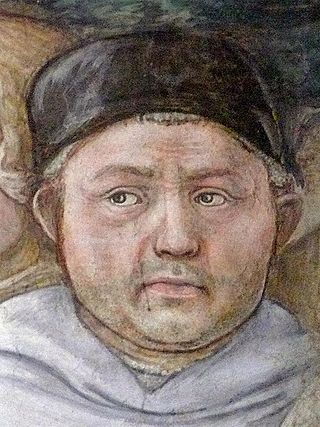
Filippo Lippi, also known as Lippo Lippi, was an Italian painter of the Quattrocento and a Carmelite priest. He was an early Renaissance master of a painting workshop, who taught many painters. Sandro Botticelli and Francesco di Pesello were among his most distinguished pupils. His son, Filippino Lippi, also studied under him and assisted in some late works.

Ridolfo di Domenico Bigordi, better known as Ridolfo Ghirlandaio was an Italian Renaissance painter active mainly in Florence. He was the son of Domenico Ghirlandaio.

Lorenzo di Niccolò or Lorenzo di Niccolò di Martino was an Italian painter who was active in Florence from 1391 to 1412. This early Renaissance artist worked in the Trecento style, and his work maintains influences of the Gothic style, marking a transitional period between the Gothic sensibilities of the Middle Ages while simultaneously beginning to draw on the Classical. Lorenzo's works were usually religious scenes in tempera with gold backgrounds.

Neri di Bicci (1419–1491) was an Italian painter active in his native Florence. A prolific painter of mainly religious themes, he studied under his father, Bicci di Lorenzo, who had in turn studied under his father, Lorenzo di Bicci. The three thus formed a lineage of great painters that began with Neri's grandfather.

Jacopo di Cione was an Italian Gothic period painter in the Republic of Florence.
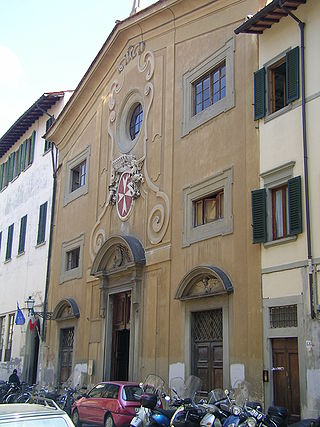
San Giovannino dei Cavalieri previously named Church of San Giovanni Decollato, is a parish church situated in Via San Gallo in central Florence, Italy.
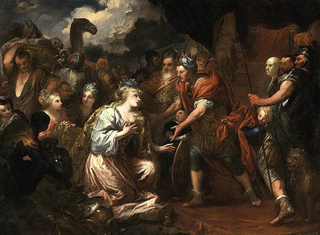
Pietro Dandini was an Italian painter of the Baroque period, active mainly in Florence.
The decade of the 1450s in art involved many significant events, especially in sculpture.

Lorenzo di Bicci was an Italian painter of the Florentine School considered to be one of the most important painters in Florence during the second half of the 14th century. He is believed to have learned his trade from his father, about whom little is known. Lorenzo’s style, as well as that of his contemporaries Jacopo di Cione and Niccolò di Pietro Gerini, was influenced by the artist Andrea di Cione. Lorenzo's paintings made use of bright colors and his compositions avoided complexity. The figures he painted tended to have round faces and were often expressionless. Another one of Lorenzo's distinctive characteristics was his precision of execution. He was known for exceptional talent in drawing, an ability that he put to use at the initial stages of his painting. Unlike many celebrated Florentine artists of this period, Lorenzo mostly received commissions from the country clergy and from the lower-middle-class Florentine guilds. His successors, Bicci di Lorenzo and Neri di Bicci, continued to serve these groups.

Bastiano di Bartolo Mainardi (1466–1513) was an Italian painter of the Early Renaissance. He was born in San Gimignano and was active there and in Florence.
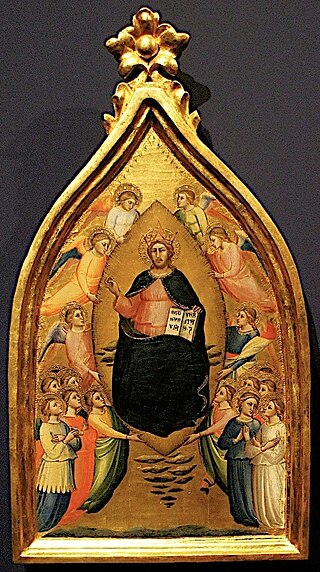
Mariotto di Nardo di Cione was a Florentine painter in the Florentine Gothic style. He worked at the Duomo of Florence, the church of Santa Maria Maggiore, and the Orsanmichele. He created both frescoes and panel paintings, and was also active as a manuscript illuminator.

Giovanni di Ser Giovanni, also known as Lo Scheggia, or "the Splinter" was an Italian Renaissance painter in Florence who was born in San Giovanni Valdarno and was the younger brother of the famous Masaccio.

Zanobi di Benedetto di Caroccio degli Strozzi, normally referred to more simply as Zanobi Strozzi, was an Italian Renaissance painter and manuscript illuminator active in Florence and nearby Fiesole. He was closely associated with Fra Angelico, probably as his pupil, as told by Vasari. He is the same painter as the Master of the Buckingham Palace Madonna. Most of his surviving works are manuscript illuminations but a number of panel paintings have also been attributed to him, including seven altarpieces and six panels with the Virgin and Child, along with some designs for metalwork.

Andrea di Giusto, rarely also known as Andrea Manzini or Andrea di Giusto Manzini was a Florentine painter of the late Gothic to early Renaissance style in Florence and its surrounding countryside. Andrea was heavily influenced by masters Lorenzo Monaco, Bicci di Lorenzo, Masaccio, and Fra Angelico, and tended to mix and match the motifs and techniques of these artists in his own work. Andrea was an eclectic painter and is considered a minor master of Florentine early Renaissance art. Andrea trained under Bicci di Lorenzo as a Garzone. He painted his most significant works, three altarpieces, in the Florentine contado, or countryside; these altarpieces were created for Sant’Andrea a Ripalta in Figline, Santa Margarita in Cortona, and the Badia degli Olivetani di San Bartolomeo alle Sacce near Prato. Aside from his major altarpieces, Andrea painted several Frescoes over the course of his career. He, along with other minor masters, are also known to have provided several different types of art, including triptychs and frescoes, for Romanesque pievi, or rural churches with baptistries. Moreover, he was well known for several types of smaller craft objects, such as small tabernacles. He is said to have worked between 1420 and 1424 under Bicci di Lorenzo on paintings for Santa Maria Nuova. He is said to have worked with Masaccio in painting the Life of San Giuliano for the Polyptych of Pisa, including the painting of the Madonna and Child, in 1426. He also appears to have collaborated in 1445 with Paolo Uccello in the Capella dell'Assunta in the Prato Cathedral. In 1428, he is listed as a member of the Arte dei Medici e Speziali guild in Florence as "Andrea di Giusto di Giovanni Bugli". His son, Giusto d'Andrea, was also a painter and worked with Neri di Bicci and Benozzo Gozzoli. Andrea died in Florence in 1450.
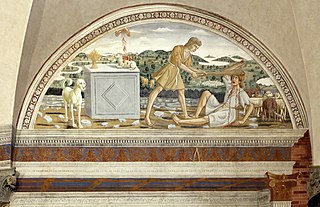
Bernardo di Stefano Rosselli (1450–1526) was an Italian painter active in his native Florence and the surrounding countryside.





















